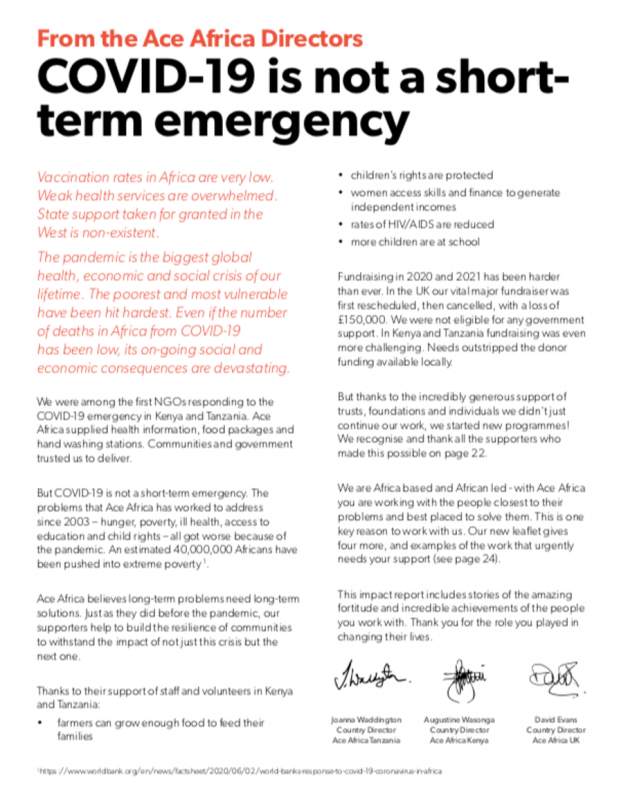Casella Postale 29, Scansano 58054 CR, ITALY
Dear Friends,
This year has been a remarkable one for Got Matar, thanks to a fruitful combination of the competence of the Community Development Group in implementing an ambitious building programme and to the immense generosity of the congregation of donors – all at a time when the wider world was “on pause” because of COVID 19 and its variants.
Below I am pleased to share a report on the past 12 months’ achievements, reflect on our journey and then provide a little more detail on the future of GMCDG.
Highlights from the past year
At the Institute of Technology (IoT), a very attractive Computer Centre was unveiled in January. It is being used not just for training ICT 2-year diploma students but also for providing training in computer competence for all IoT students, whatever their specialisation, to enhance their employability when they leave the Institute. (pictured below)
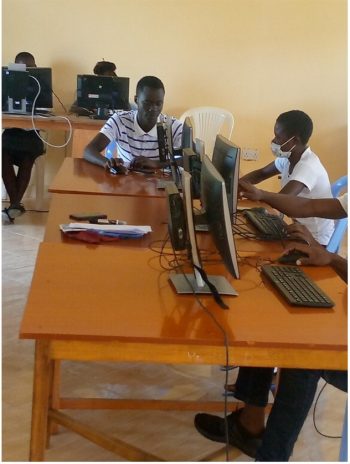
Largely thanks to the contributions of “traditional” donors, including the Swire and Spurgin Trusts, the training workshop for Metalwork and Fabrication will be completed by the end of the year (see photo below) allowing the students to migrate from unsuitable rented buildings. As in all the IoT’s construction projects, students – male and female – have worked on this building, gaining practical experience and earning income with which to pay their tuition fees. Some additional equipment is still needed and remains a funding priority, with a total estimated cost of about Euro 6,000.
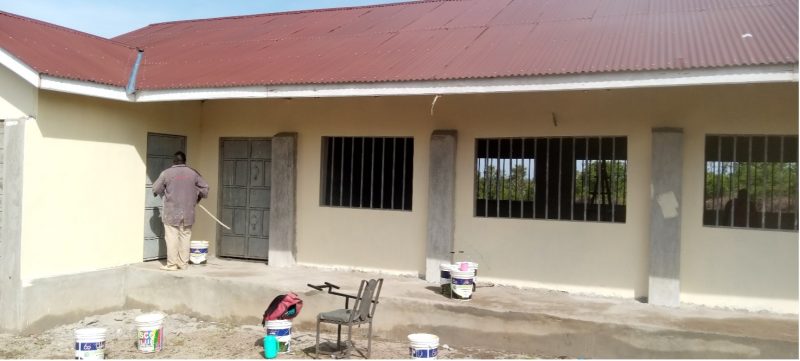
Construction of the second phase of the IoT Girls’ Hostel began in early October and is moving ahead very fast, with the aim of finishing it in December (photos show the already fully occupied first-phase hostel and the second phase).
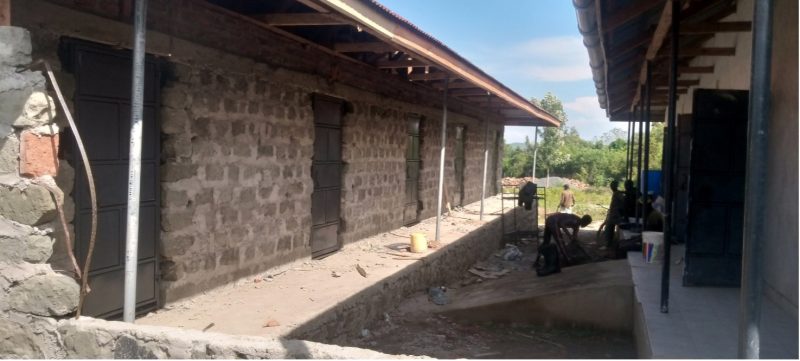
Funding for both phases has come from Fondation BERFRED which also paid, 3 years ago, for a day nursery for the children of IoT students.
Finally, construction of the new Electricians’ Training Workshop is expected to begin in January 2023. Financing has been generously provided by the guests invited by Francesco Possio and Clementina Grossi to their wedding on September 3rd this year. An amazing sum of Euro 34,000 has been given by their guests, and this will pay not only for the building but also for related equipment and other IoT priority investments.
The Electricians’ workshop will form part of the first 2-floored building on the IoT campus. It will share the ground floor with the Plumbers’ Training Workshop which, from now on, will be the main target for donations that you may choose to make in the coming months. The cost is estimated at around Euro 25,000 (or almost £22,000).
Once these two ground floor workshops have been completed, building will go ahead, as funds permit, on the upper floor. For now, the idea is to further extend the range of building-related skills training activities, opening new courses in quantity surveying and in construction engineering. When these works have been completed, the IoT will be operating diploma courses in almost all construction-related skills in purpose-built workshops.
Reflecting on the past ten years, and looking to the future of GMCDG
If we look back to my first contacts with Got Matar at the turn of the century we can see amazing advances in the scale and quality of the education system, led by the Community Development Group. The programme has been helped by donors, but also increasingly assisted by parents and the government (as in the case of the first two-storey classroom block at the secondary school: George Omollo, secretary of the Scholarship programme, is seen in the foreground of the photo).

The most startling figure from this period is that the number of children in the ten primary schools in the area has risen from 3,000 to 10,000! Donors helped to dramatically improve school conditions, but most of the cost of extra facilities has been carried by the government.
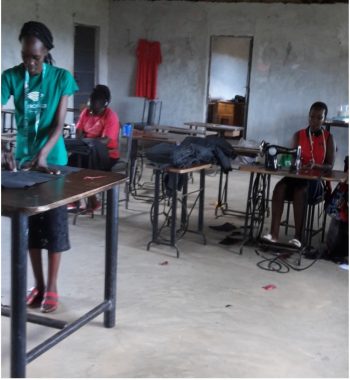
Until 2006, when the Community started to build the secondary school with a target of 600 pupils, any children aspiring to continue at school after graduating from primaries had to leave their homes. Now there are 1,200 girls and boys attending secondary school and this is expected to rise to at least 1,600 within 4 years. Got Matar Secondary School is among the top performers in the area.
The main risk now is a potential fall in educational performance because of over-crowding. To respond to this the Community is engaging with the secondary school management to explore opportunities for bringing on board new donors to help to fund the extra classrooms that are badly needed to cope with expanding attendance while continuing to provide high quality education.
While the responsibility for running the primary and secondary schools now rests with the Department of Education, the GMCDG is the owner of the Institute of Technology (IoT) and aims for it to become a financially self-sustaining centre of excellence and source of income with which to expand its programmes. As an independent institution, it enjoys considerable flexibility to adjust the courses that it is offering to respond to shifting demand and to increase income from goods and services. (photo shows IoT dress-making students making school uniforms for bursary holders).
The IoT is now also looking into the options for running a range of short courses on specialised subjects that could make fuller use of the teaching staff and training workshops. Some of these courses could combine distance learning on ‘theory’ with on-site practical work in the workshops.
The Covid 19 pandemic hit the Kenyan economy hard, especially because of the resultant collapse in tourism and related falls in employment and new investment. It is now rebounding and, in spite of prolonged droughts, is expected to grow rapidly, hopefully creating a strong demand for workers trained in the skills courses offered by the IoT (You can read more about how the pandemic hit Kenyan communities from our partners, Ace Africa, at the end of this letter.)
While the pandemic did not delay the building programme, it reduced new enrolments at the IoT as it led to delays in the graduation of students from secondary schools in the district. Pupil numbers for 2-year diploma courses have dropped but they are expected to recover in 2023 to over 300 pupils. The imminent opening of the second phase of the girls’ hostel, bringing its capacity to 60 students, should help to continue to assure a gender balance amongst pupils.
It is very difficult to measure the impacts of improved access to education in economic and social terms. I am convinced, however, that the decision, taken by the Community Development Group just over twenty years ago, to assure good education for the surviving generation, was absolutely correct. What is remarkable is not simply the Community’s foresight but also its relentless commitment to translate its vision into reality. For two decades they have pushed ahead with a far-reaching building programme and have assured the excellence of the different levels of education on offer. One of the great strengths of this venture is that entirely locally ‘owned’, wholly planned and implemented by the Community’s increasingly competent management institutions.
Much of the credit for these achievements must go to Grace Ochieng Andiki who envisioned the need for investment in children’s education and engaged like-minded community members in seeing that it was provided. She is now the Community Development Group’s Programme Coordinator (serving in a voluntary capacity) and has asked me to convey to you the Group’s immense gratitude for your very generous support over the years.

IoT emblem
I am sure that all of you who have given funds to enable this programme to go ahead share the pleasure that I sense when I look back at what has been achieved. Hopefully the programme will increasingly stand on its own feet financially, but for the foreseeable future, the Community needs to draw in funds to expand investments in more training facilities and equipment, especially for the Institute of Technology. I can assure you that good use will be made of every penny you can afford! Perhaps you can also tell any friends who would like to support development in Africa that Got Matar would make good use of their donations and has a track record to prove this.
I wish to express special thanks to Vanda Altarelli who created Associazione SONIA as a registered charity in Italy in memory of her daughter who was killed in a car crash while still at university. Apart from helping Got Matar through receiving donations and transferring them to Kenya, Vanda has created and managed an impressive portfolio of other projects intended to benefit poor communities of ethnic minorities across the developing world. What is SONIA? — Your Site Title (associazionesonia.org)
For many years, Ace Africa (UK) has also been immensely helpful in performing similar functions for Got Matar as well as enabling its Kenya office, under the management of Augustine Wasonga, to nurture the emergence of the Community Development Group’s management systems. 211221-AR2020_spreads.pdf (ace-africa.org)
If you want to access further information about Got Matar, I suggest that you refer to the website: www.gotmatar.org which is kindly maintained by Charles Ellis. Guidance on how to make gifts can be found at https://www.gotmatar.org/donations/. I would be grateful, however, if friends wishing to make their donations in Euro would contact me as a change in transfer arrangements may take place soon.
I can also assure you that you will be made very welcome at Got Matar. If you want to arrange a visit, please contact Grace Ochieng Andiki by e-mail at ochienggrace2012@gmail.com.
Roberta joins me in thanking you for your continued interest in Got Matar and in wishing you happiness and good health in the coming year.
Andrew MacMillan
